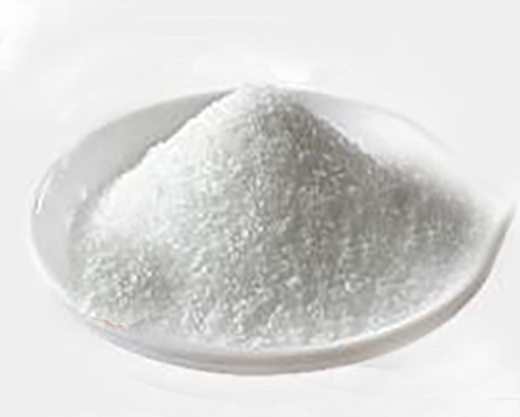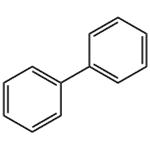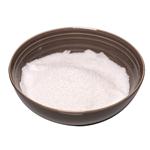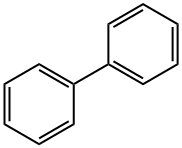The unique characteristics of biphenyl
Introduction
Biphenyl is an organic compound with chemical formula of C12H10. It is a white crystalline powder, insoluble in water, soluble in ether, ethanol, carbon tetrachloride, dioxane, aromatic hydrocarbons, etc. it is mainly used as solvent, heat transfer agent, fruit mildew inhibitor and organic synthesis[1].

Picture 1 Biphenyl powders
Toxicity of biphenyl
Biphenyls are low toxic and irritating to humans. Its steam can stimulate eyes, nose and trachea, cause loss of appetite and vomiting, and has certain toxicity to the nervous system, digestive system and kidney. The oral LD50 of rats was 3.28g/kg. The maximum allowable concentration in the workplace is > 1mg / m3 (coexisting with diphenyl ether). It can stimulate, damage the heart, liver and kidney, and have toxic effects on the reproductive system of humans and other animals. This product has stimulating effect and damages myocardium, liver and kidney. LD50: 3280mg / kg in rats (25% olive oil solution) and 240mg / kg in rabbits. It exists in flue-cured tobacco, oriental tobacco and flue gas.
Characteristics of biphenyl
Biphenyl is flammable. Be careful not to get close to the fire source. It is thermally stable and has similar chemical properties to benzene. It can undergo halogenation, nitration, sulfonation, hydrogenation and other reactions. For example, a derivative that reacts with bromine to form bromine. Nitrobiphenyl is formed during nitration. Sulfonation reaction occurs with sulfuric acid in nitrobenzene to produce biphenyl-4-sulfonic acid and biphenyl-4,4 '- disulfonic acid. It reacts with ozone in chloroform to form explosive tetraozone. The alkylation reaction produces 4-alkyl biphenyl and 4,4 '- dialkyl biphenyl. It reacts with acetyl chloride in the presence of aluminum trichloride to produce 4-acetylbiphenyl and 4,4 '- diacetyl biphenyl. Biphenyl-4-carboxylic acid was synthesized by hydrolysis of Oxalyl Chloride with carbon disulfide as solvent. In the presence of zinc chloride, it reacts with formaldehyde and hydrochloric acid to produce chloromethylation reaction.
Preparation of biphenyl
High temperature coal tar contains about 3.0% biphenyl, which can be recovered from washing oil fraction. In 1926, Dow Chemical Company of the United States began to produce biphenyl by pyrolysis of benzene. Another source of biphenyl is the by-product of thermal dealkylation of toluene to benzene. With the development of this process, the byproduct biphenyl of this process has gradually become the main source of biphenyl. In the laboratory, the diazonium salt obtained by diazotization of aniline is added to benzene, and then the mixture is slowly added to sodium hydroxide solution, stirred for reaction, and the temperature slowly rises from below 5 ℃ to 30-35 ℃. Biphenyl is formed after reaction for 8 hours.
Leakage treatment of biphenyl
Isolate the leakage pollution area, set warning signs around it and cut off the fire source. Emergency treatment personnel shall wear gas masks and chemical protective clothing. Collect in a closed container, mark and wait for treatment. If there is a large amount of leakage, it shall be collected and recycled or discarded after harmless treatment. Waste disposal method: incineration method.
Application
Biphenyl is an important organic raw material, which is widely used in medicine, pesticide, dye, liquid crystal materials and other fields. It can be used to synthesize plasticizers and preservatives, and can also be used to manufacture fuels, engineering plastics and high-energy fuels. Biphenyls are found in coal tar, crude oil and natural gas. The preparation methods of biphenyl include chemical synthesis of biphenyl by pyrolysis of benzene and separation and extraction of biphenyl from various coal tar oil fractions. The mass fraction of biphenyl in coal tar is 0.20% - 0.40%. Coal tar extraction and chemical synthesis coexist. Biphenyl is combustible. In case of high temperature, open fire and oxidant, it is dangerous to burn. It should be stored in a cool and ventilated warehouse away from kindling and heat source. It should be stored separately from oxidants and strong acids. It should be loaded and unloaded gently to keep the package intact. Biphenyl is used as heat exchanger and impregnator of fruit packaging paper. Biphenyl can be used in organic synthesis. Biphenyl is the raw material of engineering plastics polysulfone. It is used to prepare Trichlorobenzene and pentachlorophenyl. Biphenyl is used as heat carrier, preservative, dye and so on. Biphenyl is used as a reference material for chromatographic analysis. Biphenyl is the intermediate of rodenticides rodenticide modek and bromadine, and it is an organic carrier with good performance.
Reference
1 Hargreaves A, Rizvi S H. The crystal and molecular structure of biphenyl[J]. Acta Crystallographica, 1962, 15(4): 365-373.
);Lastest Price from Biphenyl manufacturers

US $100.00-1.00/KG2024-03-25
- CAS:
- 92-52-4
- Min. Order:
- 1KG
- Purity:
- 99%
- Supply Ability:
- g-kg-tons, free sample is available

US $0.00/kg2023-12-11
- CAS:
- 92-52-4
- Min. Order:
- 1kg
- Purity:
- 0.99
- Supply Ability:
- 20tons

